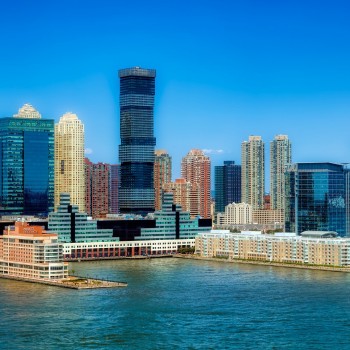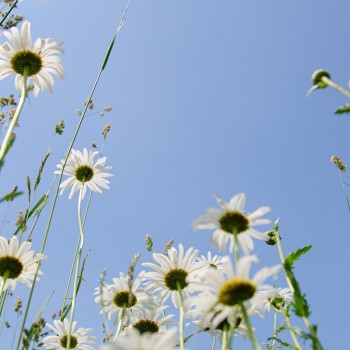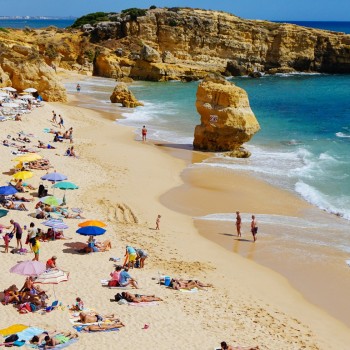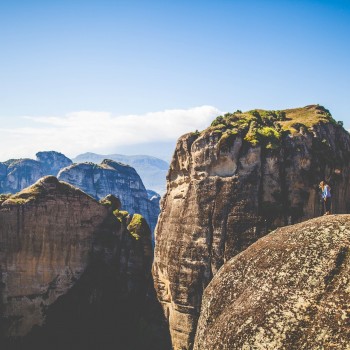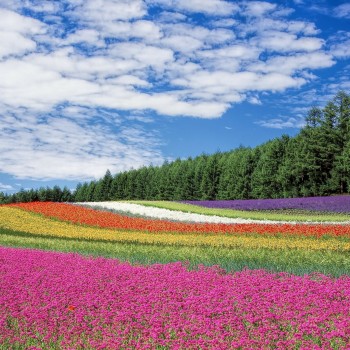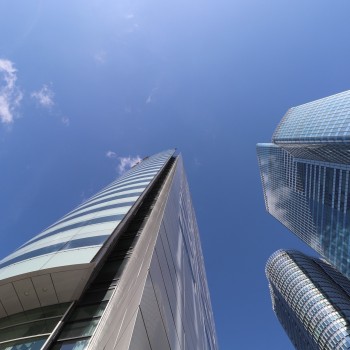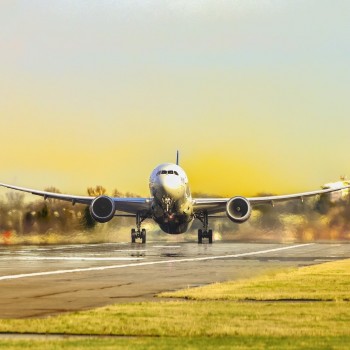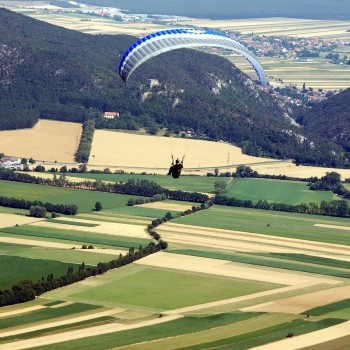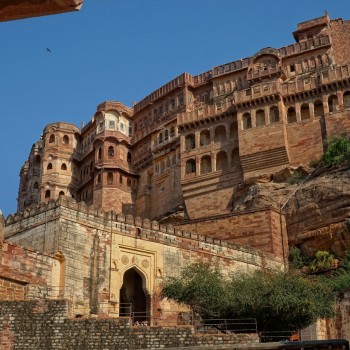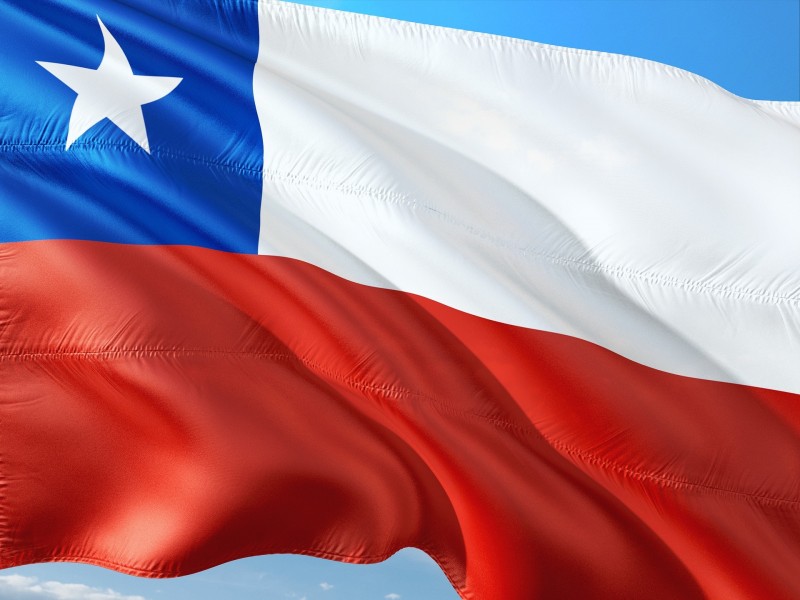Chile
Chile
Capital city description
Near the year 800, settled in Santiago, which is the capital city of Chile, different native communities chose the river Mapocho to settle down. They harvested corn, potatoes, beans, and domesticated animals. In Santiago, the capital city of Chile, is evidence that in century XV, these communities have advanced in their agriculture; specifically, the tribe of the “Pichincha” performed artificial irrigation by canals.
They had no stable political organization, clashes between different tribes were common. The clashes ended with the conquest of the Inca empire during the reign of Capac in the late fifteenth century. The arrival of the Spaniards to the region began to generate a great commotion in the place, The 12 February of 1541, Pedro de Valdivia founded the city of Santiago of the New Extreme; Called it in honor to the military protector of the Spaniards and Patron Saint of Spain, the apostle Santiago.
Climate
There are four seasons in most of the country:
summer (December to February),
autumn (March to May),
winter (June to August),
spring (September to November).
Languages spoken
Spanish is the official language
The most widely spoken language in Chile is, without any doubt, Spanish. However, you should know that it consists of a peculiar dialect, similar to Argentinian and that other indigenous languages are also spoken and used in some regions.
Fun/Fascinating Facts
- Chile is the wine capital of the world. As one of the leading producers in the so-called new world, Chilean wine is big business. The country is home to more than 100 wineries and is the world's fifth-largest wine exporter. The most popular grapes include Cabernet Sauvignon, Carmenère, Pinot Noir, Syrah for red wine, and Sauvignon Blanc and Chardonnay for white wine. Sparkling Chilean wine is also growing in popularity.
- An interesting fact about marriage in Chile is that husbands and wives keep their surnames. It is customary for wives to keep their maiden names and husbands to keep their family names. Chile has a particularly low divorce rate, and divorce was only made legal in 2005.
- Chile has around 500 active volcanoes. Adventurous holidaymakers come to Chile to hike its mountainous and volcanic terrain. Among the better-known Chilean volcanoes are Cerro Arul and Cerro Hudson. Indeed, watch your step: 60 Chilean volcanoes have erupted in the last 450 years.
- Penguins are a common sight in Chile, particularly in the country's south. As you might expect, the Seno Otway Penguin Colony, located near Puntas Arenas, boasts its fair share of the birds. Humboldt penguins can be found further north.
- One of the most exciting parts of Chile is not on the mainland at all. Easter Island is the best-known Pacific Island, lying some 3,700 kilometers off the coast. The island is a treasure trove of interesting facts and sights and is most often associated with the iconic moai statues. There are some 867 statues carved from volcanic rock and measuring as much as 6 meters tall.
Unique Customs/Traditions
- Chilean cuisine is a variety of things. It depends on where you are in the country; you can only produce particular food in parts. Seafood is a massive ingredient of the southern and center of the country. Three distinct cuisines can be distinguished: the North, the South, and the Central. Local crops are a big part of the cuisines. Some of the most used are maize, quinoa, and potatoes. Olives are used throughout the country in many ingredients as well. As for the fruit, the popular ones are lucuma and chirimoya, which are often used in desserts. Grapes are used a lot for making wine, which is done commonly. Among all of the dishes of Chile, some of the most popular and typical dishes are empanadas which are pastries filled with different mixtures of food.v
- Some of the most important religious holidays are Easter and Christmas. It includes Good Friday, Holy Saturday, and Easter Sunday. These are all official holidays in Chile. Christmas starts at the beginning of summer, and many people celebrate it outside. It begins on the eve of Christmas day, and they have dinner with families and exchange presents. Then most people usually go to a midnight mass called Misa de Gallo. Other major religious holidays include Feast of Saint Peter and Paul- June 29th, Fiesta de la Virgen del Carmen- July 16th, the Assumption of the Virgin Mary- August 15th, and All Saints Day- November 1st (celebrating the dead and martyrs). Although it isn't religious, independence day is another celebrated day, and it's on September 18th.
- In Chile, when men meet each other, they usually shake hands, whereas the women pat each other on the right forearm or right shoulder. Words are exchanged that go along with the time of day, such as "Buenos Dias" or "Buenas Tardes." When greeting friends and family, the greetings are more enthusiastic; men will energetically embrace each other, and women will kiss each other on the cheek. Chileans use both their maternal and paternal surnames. They always try to use a title if there is one. If there isn't then, they use Senor or Senora. Chileans usually like a sense of formality in all that they do. It includes firm handshakes, appropriate clothing, direct eye contact, and they typically stand close to each other when conversing with one another. When dining, the women sit before the men do.
- Avoid talking and using/eating utensils in your hands; always keep your hands visible and keep your wrists on the edge of the table. It is considered polite to finish everything that has been put onto your plate.
Popular universities
| Name | Description | |
|---|---|---|
| Universidad de Santiago de Chile, | Universidad de Santiago de Chile (University of Santiago de Chile), founded in 1849, is a non-profit public higher education institution located in the urban setting of the large metropolis of Santiago (population range of over 5,000,000 inhabitants), Region Metropolitana de Santiago. Officially recognized by the Comisión Nacional de Acreditación, Chile (National Accreditation Commission), Universidad de Santiago de Chile (USACH) is a large coeducational Chilean higher education institution. Universidad de Santiago de Chile (USACH) offers courses and programs leading to officially recognized higher education degrees such as pre-bachelor degrees (i.e., certificates, diplomas, associate or foundation), bachelor degrees, master degrees, doctorate degrees in several areas of study. | |
| Universidad de Concepción | Founded in 1919 in the coastal city of Concepción, in Southern Chile’s Bío Bío Region, the Universidad de Concepción has long been one of the nation’s leading higher education institutions, making significant contributions to the country’s scientific and cultural development. The Universidad de Concepción offers a full range of study programs in subject areas ranging from the humanities to the primary and applied sciences, furnishing a solid foundation for undergraduate and graduate teaching degrees and for research. | |
| Pontificia Universidad Católica de Valparaíso | The Pontificia Universidad Católica de Valparaíso’s history begins in 1924 with the creation of the Isabel Caces de Brown Foundation. Years later would give birth to the first university in the region of Valparaíso and the fourth one in Chile. In 1928 the university opened its doors to the community, beginning with an enrollment of 250 students. Today, it has more than 14.000 undergraduate and graduate students, receiving more than 850 international students every year. Since its foundation, PUCV has expanded and developed its academic scope to become one of the most important universities in the country. PUCV has nine ( 9 ) faculties and more than 100 Undergraduate, Graduate, and Specialization Programs. It also has accreditation of 6 years in every area, a standard of excellence that only six ( 6 )universities have in Chile, the Chilean university with the highest number of certified undergraduate programs. | |
| Universidad Adolfo Ibáñez, | Founded in 1953, the UAI Business School is the oldest in Chile and provides management education to students enrolled in undergraduate, graduate, master’s, MBA, and Ph.D. programs. The UAI Business School and many of its academic programs and departments are consistently ranked among the best in Chile and Latin America. | |
| Universidad Austral de Chile | Established in 1954, Universidad Austral de Chile (Austral University of Chile) is a research university based in Valdivia, Chile, with its main campus on Isla Teja (Teja Island). It also has campuses elsewhere in Southern Chile, in the cities of Puerto Montt and Coyhaique. Currently ranked 701+ globally, Austral University of Chile also features in the global top 150 for agriculture and the top 500 for medicine. The university is one of the eight Chilean Traditional Universities founded before the 1980s. Universidad Austral de Chile offers scholarships for students who have achieved a high Weighted Selection Score and current students with a high-grade point average. | |
| University de Talca | Founded in 1981, Universidad de Talca has always considered the challenges of a higher education project rooted in solid foundations. They have the highest academic, scientific, and technological standards with an international vision, allowing them to be recognized as one of the top ten universities in Chile. Five campuses (Talca, Curicó, Santiago, Linares, Colchagua) in 3 regions of Chile offer students modern libraries equipped with a wide variety of books, full Wi-Fi access, and specialized services to achieve their academic goals in both scientific and cultural aspects. This is of the utmost importance for students inserted in a globalized world that is in permanent change and increasing demands educational services of excellence. The University of Talca is constantly updating the quantity, quality, and availability of its information resources to respond to the needs of students, their study programs and be appropriate to the new curricular developments and updated technology.- Self- Learning: | |
| Universidad Técnica Federico Santa María. | The Universidad Técnica Federico Santa María is Chile's leading University in Engineering, Science, and Technology and the country's third most important higher education institution, according to the National Undergraduate Accreditation Commission (CNAP). It was founded in 1926 and named after a visionary Chilean businessman, Federico Santa Maria, who died a year before. His goal was to create a specialized university in this area that would lead to the development and improvement of human beings. He also privileged those skilled students who lacked financial support by giving them the chance to study in the University and, consequently, more prospective job opportunities. 6,800 students, besides four campuses (2 in Santiago, 1 in Rancagua, 1 in Guayaquil, Ecuador). Altogether, they add up to 14,000 students, distributed in 43 undergraduate programs, 19 master's degrees, and six doctoral degree programs. Altogether, they add up to 14,000 students. Forty-three undergraduate programs, 19 master's degrees, and six doctoral degree programs are part of the institution. The teaching staff provides a thorough education, giving sports and culture a vital place. Español Federico Santa María Technical University is the leading University in engineering, science, and technology in Chile. According to the National Accreditation Commission, its high prestige and educational quality have also positioned it as the country's third most important higher education institution. It was founded in 1926, a year after the death of the visionary and enterprising Buenos Aires businessman in whose honor it was baptized. His goal was to create a house of studies specialized in this field, which would contribute to the development and improvement of human beings with his leadership. He also wanted to privilege those needy but deserving students who required monetary aid, allowing them to study at the university and have more job opportunities. Today, the University has a Central House located in Valparaíso, with a privileged view of the Pacific Ocean, which houses 6,800 students, in addition to 4 campuses (2 in Santiago, 1 in Rancagua, and 1 in Guayaquil, Ecuador) and 2 locations ( Viña del Mar and Concepción). There are 14 thousand students, divided into 43 undergraduate, 19 master, and six doctorate programs. | |
Festivals & Events

Fiestas Patrias
Date: September 18 and 19
Without a doubt, Chile’s most important festival, Fiestas Patrias, is the National Holiday of Chile, celebrated on Sep. 18 and 19. It is a commemoration of the First Government Assembly which marked Chilean Independence on Sep. 18, 1810. The festivities include dancing the Cueca, the national dance of Chile, which is done in pairs with handkerchiefs.
People adorn their houses with the national flag. Everyone takes to the streets and parks to share in games, food, and drink, including the famous “Terremoto,” usually a mix of pipeño wine, pineapple ice cream, and grenadine.

La Tirana
Date: June 16.
La Tirana is a widely celebrated festival, attracting many tourists and pilgrims from across the country. It takes place in the northern town of La Tirana in Tarapacá Region on June 16.
The festival mixes the Catholic and indigenous religions in paying tribute to the Virgen del Carmen through carnivals and dancing. The dancers wear elaborate costumes and masks, with the lead dancer dressed in the most fierce costume to lead the diablada, the “dance of the devils.” Locals sell crafts and food in the streets, and many masses are held in the surrounding churches during the festival.

Grape Harvest Festival
Date: During the final week of March through May when the grapes are ripe after summer
Chilean wine is world-famous, and so the Grape Harvest Festival, or “Vendimias,” is an important tradition. The festivals take place during the final week of March through May when the grapes are ripe after summer. Rural towns across central Chile celebrate the festival with a religious ceremony to bless the first batch of grapes.
A Grape Queen is then chosen, who is weighed against a bottle of wine, and teams of locals engage in a grape-stomping competition to see who can pulp the most juice out of 20 kg of fruit in 10 minutes, and a fair amount of wine is also consumed to celebrate Chile’s bountiful production.

Festival de la Virgen de Andacollo
Date: Held from Dec. 24 to Dec. 26,
The northern festival of Andacollo in the Coquimbo region is a religious festival of the native Molle people, related to the Incas. In the native language of the Molle people, “Andacollo” means “Queen of Copper,” thus, the festival is a celebration of Chile’s most fantastic natural resource.
It is one of Chile’s most widely attended festivals, held from Dec. 24 to Dec. 26, and includes traditional dances, music, and religious processions.

Tapati
Date: Held in February
Tapati celebrates ancient culture and tradition on Easter Island (Rapa Nui), held in February. The local people paint their bodies with mythical symbols and images and gather to recount the legends of their ancestors.
There are also many competitions, such as swimming and canoeing, which test physical skill, the most daring of Haka Pei, where contestants sled down the steep mountain on banana tree trunks.

Carnaval Andino con la Fuerza del Sol
Date: January
The Andean Carnival of the Strength of the Sun is held in the northern city of Arica during the first week of February.
It is a blend of Catholic Spanish and indigenous traditions, in which locals flood the streets with a vibrant carnival, dancing, and music. More than 160,000 people participate in the festival, especially for the final day of the carnival, where the performers dance through the city to finish at the foot of the Morro de Arica.

Santiago a Mil
Date: January.
This cultural festival held in the capital city of Chile is the largest arts festival in the country, with music, art, and theatre shows available across the city at low prices. Performers come from across the world to take part in this three-week festival during January.
There is also the opportunity to attend open-air theatre and street shows to experience Santiago’s rich and diverse culture.

Festival de Viña
Date: February
Like Santiago a Mil, the Viña del Mar International Song Festival celebrates music and the arts. It is the largest and oldest music festival in all of Latin America, originating in 1960.
It is held annually during the third week of February and features some of the most famous artists from all over the world.
Attractions / Top Sights

Easter Island
When to visit: March, April, October or November
One of the most isolated islands on Earth, Easter Island is located in the southeastern Pacific Ocean. Officially a territory of Chile, it lies thousands of miles off the coast, roughly halfway to Tahiti. The island is famous for its 887 extant monumental statues, called moai, created by the early Rapanui people centuries ago.
Not surprisingly, the well-publicized moai have overshadowed the island’s other tourist attractions. But Easter Island also offers excellent diving and surfing, two volcanic craters, and several sandy beaches.

Pucon
When to visit: January, February, March and December
Pucón is a small touristy town in the middle of the southern Lake District. The unrivaled location by a beautiful lake and imposing volcano make it one of Chile's most popular tourist attractions.
Pucón offers various sports and recreational activities, including water skiing, snow skiing, white water rafting and kayaking, horseback riding, natural hot springs, and climbing the Villarrica volcano.

Torres del Paine
When to visit: December to February
Torres del Paine is a national park in the Extreme South region of Patagonian Chile and features mountains, lakes, and glaciers.
The park's centerpiece is the three Towers of Paine, three spectacular granite peaks shaped by the forces of glacial ice. The highest peak is about 2,500 meters (8200 feet).

Valle de la Luna
When to visit: June to September
Valle de la Luna is located in the Atacama Desert. This breathtaking desert landscape results from centuries of winds and floods on the sand and stone of the region.
The giant sand dunes and stone formations mimic the moon's surface, giving the region its name, which translates to "Valley of the Moon."

San Rafael Glacier
When to visit: December to February
Located within the Laguna San Rafael National Park, the San Rafael Glacier is a giant glacier that calves into the Laguna San Rafael. The glacier is accessible only by boat or plane.
The journey by boat is a spectacle in itself, passing through the narrow channels of the isolated Aisén region. What you can see from the boat is just the end of the glaciers, which extends some 15km (9 miles) from their source.

Valparaiso
When to visit: April 30- September 30 , October 22- May 13
Located on the Pacific coast of the central region of Chile, Valparaíso is known for its brightly colored houses, bohemian culture, and beautiful seaside views.
Built upon dozens of steep hillsides overlooking the Pacific Ocean, Valparaíso boasts a labyrinth of streets and cobblestone alleyways, embodying a rich architectural and cultural legacy.

Chiloe Churches
When to visit: November to March
The Chiloe archipelago is an isolated group of islands, best known for several unique churches that boast a particular architectural style called Chilota. This style is a unique combination of aboriginal and European Jesuit influence and was reflected in more than a hundred wooden churches in these islands created in the seventeenth century.
The churches fell into disrepair, but almost two dozen restored sites are now available to tour and serve as a gorgeous representation of this unique mestizo style combination.
.jpg)
Santiago: Chile's Cultural Capital
When to visit: September to November
Santiago is not only the financial and business capital of Chile.
It also serves as the country's cultural and entertainment center. It is home to endless fun things to do, including visiting its best museums and galleries, along with excellent shopping, dining, and hotel options.
Centrally located and the country's central transportation hub, Santiago, most visitors begin their Chilean travels before heading to the Andes or other areas of outstanding natural beauty, such as Easter Island. The most intelligent travelers will allow time in their Chile travel itinerary to get to know Santiago.
Santiago was founded in 1541 and is relatively crowd-free. The city features points of interest, such as the Centro Cultural Palacio La Moneda, a state-of-the-art cultural center occupying part of the impressive Palacio de la Moneda. The Chilean National Museum of Fine Arts (Museo Nacional de Bellas Artes) was established in the 1880s, focusing on Chilean artists and boasting an extensive permanent collection of paintings, sculptures, and photos.

Valle Nevado
When to visit: April to October
The Valle Nevado (Snowy Valley) resort region in the El Plomo foothills of the Andes is well-served by public transit from the country's capital of Santiago, located just 46 kilometers west of the slopes and established in 1988.
It's 3,000 meters above sea level and is skiable 112 days a year-the resort features 37 trails and 11 lifts. Founded in 1988 by French entrepreneurs, it includes housing facilities and around 900 hectares of skiing area.

Cochamó Valley
When to visit: October to April
Known as the "Yosemite of Chile," Chile's beautiful Cochamó Valley region is a delightful area to explore. Situated in the Los Lagos region of the Andes and named after the Cochamó river, it's a region that-like Yosemite, has become extremely popular among hikers and rock climbers, the latter drawn here for the chance to tackle its many 1,000-meter-plus granite walls.
Hikers, for their part, can choose from a variety of trails of varying degrees of difficulty. Most of them take you directly to famous sightseeing spots, including the many beautiful waterfalls that dot the region.



